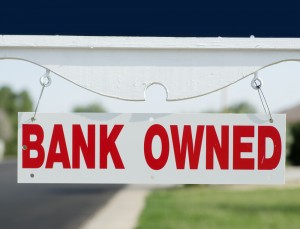Initial results recorded in our local MLS indicate we are ahead of last year in the first three week of the New Year. Total closed sales volume for the first three weeks was $3,570,000 as compared to $1,928,700 for the first three weeks of 2011. There were 13 closings for 2012 compared to 9 closings for the first 21 days of last year. The initial closings for 2012 included one sale at $1,350,000 with the highest dollar sale recorded in early 2011 of $454,500. Even adjusting for the effect of the high dollar closing, the figures clearly indicate we are starting 2012 with better results than the beginning of last year.
As discussed in my earlier article on the Year End Real Estate Results posted January 2nd, challenges remain in our local economy that will continue to impact our ability to experience any sort of sustained economic recovery. Still, the early results would indicate we are off to a start that confirms a slowly improving set of real estate market statistics.
Recently I met with representatives of two of our regional banks to discuss the values and marketing of land inventory they have acquired through foreclosure. During the boom years of 2002-2007, the market absorbed land inventory of all types at a fast pace while prices appreciated beyond all expectations. It seemed back then that an investor or developer could acquire land at the then market price, wait a short period of time and resell it at a substantial profit. For the developer, by getting zoning and entitlements for future development, value could be increased exponentially. It was within this environment that local and regional banks began to provide financing to both land developers and investors here in SW Colorado. Appraisals confirmed values by the number of Comparable Sales that were closing and by discounting the projected future cash flows that the developers projected within their business plan. Back then it was rare for a lender to require a Feasibility Study to validate the assumptions made by the borrower-developer regarding projected selling prices, market share and absorption rates. In many cases the lenders knew they could package the loans with others into collaterized mortgage ‘ (“CMO’s”) and pass the future risk on to other investors. In some cases the lenders retained a small percentage of the loan as well as the loan servicing. Additionally, they often participated the loan among other banks, and sometimes those sales or participations had buy-back provisions. In other cases the regional banks simply held the debt as portfolio loans and accepted all the risk. So long as all went well- no worries. Of course as we all have the clear vision now provided by looking in the rear view mirror, things began to unravel in the real estate world, and all did not go well.
Land inventory is presently the most over-supplied real estate category within our market. Commercial land is at the top of the list because the demand has dropped so significantly that there are few sales actually closing. This makes valuing commercial land very difficult. My objective in valuing a property for an owner is different than an appraiser. For my Sellers, typically the objective is to move the property at the best possible price, within an acceptable timeframe. In addition to reviewing the historical data, I look more closely at the current and projected future market conditions to estimate the ratio of supply and demand. It is important to know many similar properties have sold in the prior 6-12 months, as well as how many are presently on the market. I further review the properties for sale to determine how many are lender-owned, or likely to become lender-owned. Our local MLS will not provide all the details needed to properly assess current market value. A close look at the data within the County Recorder’s Office, discussions with local lenders and a review of our in-house foreclosure database provides the details which help more clearly define the market forces.
Without a sufficient number of sales closed during the prior 6-12 month period, one has to look further back in time. For our area, this still doesn’t provide much useful data, even going back another 12 months. Ultimately when end-user demand has nearly evaporated from the current market, the value of land drops to that level needed to attract purely speculative investors. These “Bottom Feeders” are the brave souls that will wade back into the swamp before it has been drained and all the alligators have exited. These are the risk takers that analyze the market carefully and decide to step in ahead the point in time the investing public sees a solid real estate recovery trend. In return for bearing a very high level of risk, they require a very high potential rate of return. They will only buy at the price they feel minimizes further downside risk. They typically diversify their investments knowing some will do really well, but some will not. In the technology world, these risk takers are known as Venture Capitalists. The name is probably equally appropriate for the high risk, early phase real estate investors.
For the banks that now own an increasing share of the vacant commercial land within our area, they have some difficult choices. In order to liquidate these assets they will likely be forced to accept considerably below what the property was last appraised at. In some instances they will have to sell below what they have written the value down to. If they choose to hold the asset waiting for the market to improve, they must bear the cost of property taxes and P.O.A. dues and be comfortable with the possibility of more downside risk. Further complicating the decision are the requirements of the bank examiners as well as their auditing firm. Taking a loss further impairs their capital and reduces their lending capacity.
Though in today’s economy a bank’s cost of capital is extremely low (think how low a rate your savings account earns today) banks do not want their lending constrained. They need to be able to make good loans when the demand is present. In order to do so, they have to maintain a certain “capital ratio” or net-worth level that is mandated by the banking regulators. When they sustain loan losses in excess of the reserves they have set aside, their capital is reduced and they must either raise capital by selling stock or other assets they have unrealized gains in, or, reluctantly, they must reduce their lending activities and reduce their total assets.
At times it is difficult to understand the decisions banks make regarding the sale of their real estate. Unlike private investors, they have auditors, banking regulators as well as shareholders to answer to. In today’s challenging economy, with financial regulations changing continuously, they have their work cut out for them. Like all of us, our regional banks want things to improve sooner rather than later.
You will find a number of interesting articles discussing the tough choices facing many of our regional banks within this magazine:
http://www.mortgageservicingnews.com/ If you would like information on any property in Southwest Coloroado, be sure to check our website: http://www.pagosasource.com/


